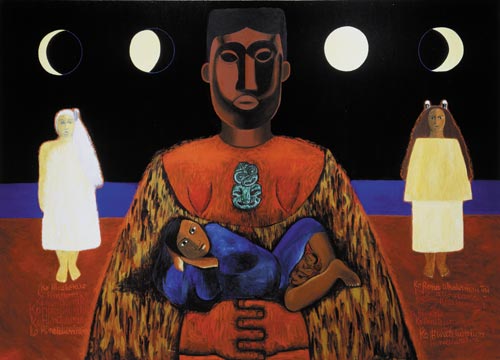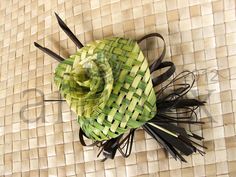Potaka:
Description: Tall, slightly bendy, blue-green leaves with powdery blue underside. Similar to Ruawai. Black margin and keel.
Uses: Mature blades strip well with shell into long strands of fine, silky fibre. Very good for kete as it dries very white when boiled for one minute.
Muka extraction: Medium amount of muka. Doesn’t extract cleanly and para is hard to scrape off with knife. Not a muka flax.
Raranga (unboiled): Whenu easy to soften and long. Ideal for whāriki (mats). Whenu pliable and slightly waxy. Good raranga (weaving) flax.

Ruawai:
Description: Tall, rather bendy leaves. Bright, light blue-green blades. Silver-blue, powdery underside. Black margin and keel. Orange keel and black margin on young leaf. Silver-purple shadings at base of plant. Similar to the cultivar Kōhunga.
Uses: Grown widely on the East Coast and prized for its long, white silky fibres of superior quality. Strips easily and cleanly. Ideal for whenu (warp) and aho (weft) for kaitaka, korowai and muka kete. Used in kaitaka kete as it dries white when boiled for one minute. Babies on the East Coast were once placed in tightly woven baskets for almost the first year of their lives. They were covered with a bundle of silky muka fibres which could be changed and washed.
Muka extraction: Muka extracts cleanly, para sticks to fibre. Medium to small amount of fibre.
Raranga (unboiled): Easy to soften, edges do not fray. A good raranga (weaving) flax.

Taeore: Description: A fine variety. Tall, bendy, pale blue-green leaves, powdery blue on reverse. Similar to Kōhunga but finer and slightly more droopy. Black margins and keel. Plenty of very tall, light-weight flower heads.
Uses: Easily stripped into long strands of strong, silky white fibre using haro method. Fibre used for aho in high quality cloaks. For kete, leaves dry to a pale fawn when boiled and a deeper colour when unboiled. Fibre in muka kete dries to a soft cream colour. Strips prepared for kete and whāriki will not shrink after being woven, if boiled or dragged through boiling water before weaving. The stalks and seed pods have provided Rene with a fine range of apricot toned dyes for her handspun wool.
Muka extraction: Muka extracts fairly easily but not cleanly. Leaf matter sticks to fibre especially around incision. Para removes easily. Rene Orchiston regards this flax as a muka cultivar. It could be because of the time of year or location (South Island) that our flax performs differently.
Raranga (unboiled): Beautiful, soft, leathery. Great for raranga. When softening, tip of whenu sometimes splits.

Takirikau:
Description: A favourite of the Ngāti Porou. The term tākirikau (like tīhore) is applied to all the finer cultivars of flax which can be stripped of fibre without the use of a shell (i.e., with the fingers only). A very handsome harakeke, growing at times up to 3 metres high. Straight, very strong, pale yellowy-green leaves. Bright yellow-orange margin and keel. Small number of very high, heavy kōrari.
Uses: A real whītau harakeke, producing long strands of strong, shiny fibre. Could be good for strong whenu (warp) in weaving. Very good piupiu variety, particularly for ladies piupiuóeasy to prepare, has plenty of length and dries hard and very strong. Dries to a pale clear yellowy cream when boiled for one minute. Unboiled, has a little more greenish tone.
Muka extraction: Muka extracts effortlessly and cleanly. Para removes easily.
Raranga (unboiled): Even while harvesting, leaves feel soft, leathery, and pliable. Dead leaves also feel soft. Similar to Kōhunga. Edges fray, strands of muka keep separating from whenu when softening.

Tapoto:
Description: A real tīhore variety and one of the favourites of Hawke’s Bay Māori. Once prevalent where Havelock North now stands. Strong, straight, short narrow blades tapering to a sharp point. Pale yellow-green leaves with bright orange keel and margins. Very fine, tall flower stalks. Similar to Tākirikau, but generally smaller.
Uses: Muka variety. Strips easily and cleanly into long, shiny, white fibre, brittle but very strong. Very good piupiu harakeke. Dries very hard to a pale cream colour. Used for kaitaka, whāriki and kete.
Muka extraction: Muka extracts well, some leaf matter sticks to fibre. Para removes well. Fibre is dull and easily “fluffs” up when cleaned. Fibre feels strong.
Raranga (unboiled): When softening, whenu often split lengthwise and edges fray. It performs like a typical muka flax, only fibre doesn’t release well. Whenu once softened are waxy and keep tension well. Thick butt ends and thin tips make for uneven weaving.\
































































